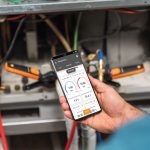The importance of air conditioning and ventilation specialists checking carbon dioxide levels in offices and schools has been highlighted by a survey.
There is still not a lot research that defines the impact of carbon dioxide on human productivity, however, some have tangible connections between the two. In poorly ventilated rooms, the high levels of carbon dioxide and other indoor gases can, in some cases, decrease cognitive performance and productivity levels.
On study from the Lawrence Berkeley National Laboratory found in testing that high levels of the gas can decrease performance and decision making. Although humans emit a quantity of carbon dioxide themselves, researchers found that building materials and infrastructure can also contribute to the high levels.
“I see this as a significant issue,” William Fisk said, one of the study’s researchers told Vox.
“And for carbon dioxide in particular, it’s been really surprising to see such a strong detrimental effect.”
According to some experts, regulations in many countries only govern against high levels of carbon dioxide. These laws are designed to protect against physiological problems, rather than levels that affect our productivity levels or decision-making skills.
Mr Fisk believes it is up to architects and engineers to increase the importance of indoor air quality during the construction phase. This way both students and workers can enjoy a healthy environment in which to succeed.
“Codes need to be in place, and they need to be enforced,” he said.
“And people who design buildings need to have the awareness to construct ones that are healthier for people to spend time in. To really solve the problem, all parties need to be involved.”
Industry options
To ensure air conditioners and ventilation systems are up to scratch, there are a number of options available from testo.
One particular tool is the testo 315-3 CO and CO2 Detector that can measure both carbon dioxide and monoxide levels in an environment. The device features a highly sensitive electrochemical sensor that sets off an alarm if safe levels have been exceeded.









 Reduce cooking oil costs while ensuring quality
Reduce cooking oil costs while ensuring quality Expert knowledge on CO2 monitoring
Expert knowledge on CO2 monitoring Refrigeration knowledge - in 3 modules
Refrigeration knowledge - in 3 modules



